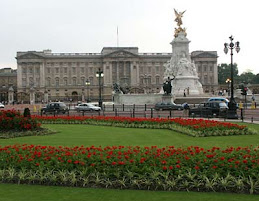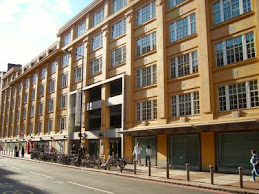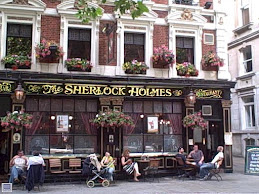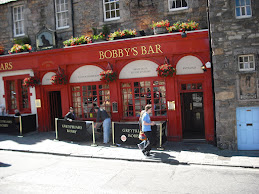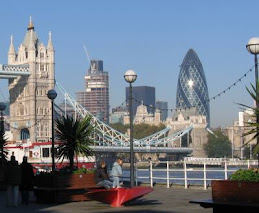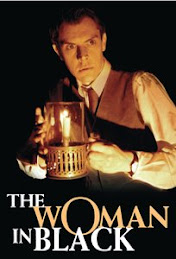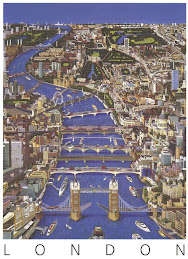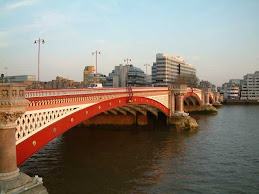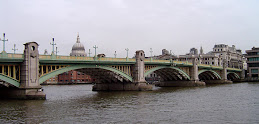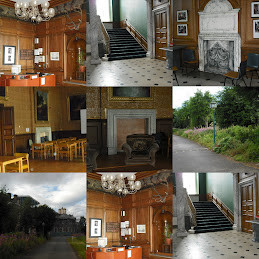

Interpreting the John Murray Archive: Manuscripts & Accessibility
Introduction to Emma Farigher
Upon coming to the National Library of Scotland after our first evening in a historic district of Dalkeith, located just outside of Edinburgh, we were greeted by our tour guide, Emma Farigher, the Education and Outreach Officer. We viewed a slideshow that offered a background description of the library, collection and the staff prior to a tour of the exhibition room of objects, art, and manuscripts.
Who are the Patrons? Collection Highlights:
The National Library of Scotland (NLS) offers its very broad range of “customers” the research tools needed in order to conduct research. It is a world renowned reference library and one of six legal deposit libraries in the British Isles that houses materials such as books, manuscripts, music and maps numbering in the millions. Primarily known worldwide for the collections of books and manuscripts, the NLS maintains a collection of other items such as sheet music, business directories, market research reports, government publications, photographs, posters, pamphlets, magazines, postcards, sporting programs, CDs and electronic materials such as maps, databases, e-journals, websites and microfilms. Nearly every subject is covered in this vast collection, with collection strengths in humanities and social sciences, in addition to extensive holdings of technical, scientific and business materials that have gained international importance. The NLS offers a historical collection that focuses on Scotland and the Scottish people, while charting their influence globally. It was learned that the library welcomes anyone interested in the services and collections. Mrs. Farigher further added that academic credentials are not necessary to conduct research there, so the collection is for everyone’s enjoyment and research needs. So therefore, it is of value for me to learn that this library generously offered something for everyone, with collections for past and present generations that represent world class collections and services comprising: printed collections; modern collections; serials; music collections; foreign collections; rare books; official publications; science information services; Scottish business information service; manuscripts and maps. Of additional importance to this collection is the late John Murray Archive. He was a world renowned British publisher, whose list of famous authors shaped many fields, offering an archive of historical papers, original manuscripts and correspondence.
Mrs. Farigher informed the class that the staff as experts are very attentive to the customer’s research needs and offer help from the “Inquiry Desk” with using electronic resources, catalogues, or locating specific items in the varied areas of the collection.
Background of the Library and Accessibility Issues on the Forefront:
Mrs. Farigher started the discussion by giving background information of the library and the collection and John Murray Archive. We learned that the John Murray Archive is a very important part of the collection. The collection in its entirety was funded with 32.5 million pounds from the ground floor and that there is a special “Lottery Fund” that supports community schools and offered the library a very supportive grand sum of 17.5 million pounds. The John Murray Archives channels profits from this support into development of the collection. The heritage funding is designed to ensure accessibility to the collection by patrons. Accessibility is deemed very important and making the collection very searchable is just as important an element in the design of the collection. An important focus is on catering to the special needs groups in order to offer a collection in a way that speaks to everyone through design and display in the galleries. The collection is put together in a way that all age groups can access it and gain something unique from it. The collection is portrayed in a way so that through access, all may be able to conduct research and gain confidence in their skills.
The Staff:
Some of the main goals of the library staff is to educate and teach patrons how to conduct independent research through a collection that is portrayed in a manner that offers quality educational tools for everyone in a variety of outlets. The numbers of staff and other joint team members from the outside who collaboratively work together to make this exhibition all possible is a very large number of very committed individuals to include: the curatorial staff; external exhibitionists; specialists, consultants and artists.
Special Concerns and Design Elements of the Exhibition:
Mrs. Farigher informed us that one issue of a practical nature is in bringing in more bright lights to illuminate the displays in the exhibition galleries. A concern is also in ensuring that the rooms offer ample spacing and flow for patrons to roam the collections comfortably without any obstructions or barriers in access. Height was also a very important element to obtain with the exhibition. Bringing in these elements helps patrons to freely float through the collection with an open mind of interpretation of the collection.
Of the main special design elements of the exhibition are: Objects; Art; and Manuscripts. The objects of the exhibition must be easy to understand. The labels must be indicative of age and purpose. The purpose is for patrons to use the experience to understand the object. The Art is supposed to emote an emotional response from patrons. The art was discussed as being a gateway to understanding and gaining insight into the meaning of the collection. The aesthetics of the art serves an important purpose in touching upon the senses and opening one up to the meaning of its portrayal in the exhibition. The manuscripts offer ideas held within the content and are offered to provide one an understanding of the object’s value. An example would be why it was written and to offer the context in which it was written. Oftentimes the manuscripts can be difficult for some “visitors” to use, so there are some risks involved with the offer of manuscripts. If the textual information is too heavy with large amounts of text, then some groups are not reached.
What makes an Archival Exhibition Engaging?
Mrs. Emma Farigher explained that the John Murray Archive Exhibition at the National Library of Scotland is displayed in a very theatrical way, with creative and emotive displays. The thematic objects that tell part of a story in a unified and orderly way, enrich the exhibition of each display with label poor content. Information is gathered from the objects and how they are displayed physically within the display and electronically through related objects, tell more of a story than the display labelling. This type of interactive and theatrical display is very engaging and involves the use of light and shadow to create an appropriate atmosphere. According to Emma, the displays are very robust and durable for many visitors to handle and manipulate over time. The stories of each display are told through various means of the communication processes. She explained that the collection strives for all of the engaging elements in the archive exhibition discussed in terms of “accessibility,” which is the key!
The Importance of Market Research:
The visitors are continually asked for feedback on the exhibition as evidence that the collection is reaching the public in an appropriate and efficient manner in order to test accessibility issues. Of some of the feedback given that has offered understanding of barriers to access for some are the varied political issues and struggles of some cultures that may impinge upon their interpretation and use of the exhibition. With global visitors, the objects in the collection need to be narrated in some manner in which the message crosses all cultural barriers. Of importance in learning was that every item in the exhibition has an audio format for enhanced accessibility to the collection!
Learning Outcomes of the John Murray Archives:
It was explained that the collection offers certain very specific learning outcomes which are: Knowledge and Understanding; Skills; Attitudes and values; Enjoyment, Inspiration and Creativity; and Activity, Behavior and Progression. Emma explained that these elements are important because visitors can become readers, encouraging literacy, and actually utilize/use the collection for research and recreational needs today and into the future.
To explain learning outcomes, a circular diagram was displayed to explain it further. The manuscript (ie. Archives) was explained and illustrated as the core of the collection, with known additional layers of interpretation. The context of the collection is the world or background. The process was the sales and how the objects/displays of the exhibition were produced. It is important that people are represented in the archives and that it is developed in such a manner that understanding is obtained so that visitors are lead through the archives in an organized and meaningful way. The exhibition is intended to tweak the interests of many so that they will come back again “to develop a relationship with the archives.”
Meet David McClay: Second Exhibition Presenter:
The second presenter of the exhibition offered insight into the archives. Mr. David McClay stated that the collection covers eleven authors of seven generations, including scientists, poets, and novelists. I was amazed to learn that this collection is the most expensive and important archive in the world! Valued at 45,000pounds originally, it is now more closely valued at over 200 million pounds today. It was explained that it is very expensive to preserve, conserve and catalogue each item as well as employ sufficient numbers of experienced staff to tend to an archive of this magnitude and importance/value. Of the main challenges David understood to exist, above and beyond the cataloguing, preservation/conservation and staffing issues, is in making sure that the collection is ‘brought to the public.”
At present, there are over 30,000 items in the collection. Of importance to this collection are over 50,000 images in the collection of “Charles Babbage” alone. I wish I had more time to preview this specific collection, as I have read so much about the famous Mr. Babbage in my library coursework and felt privileged to have an opportunity to view such items, bringing his life and works into perspective beyond the library textbooks!
Outreach: A Traveling Exhibition
Mr. McClay said that the staff is looking to new, interesting and innovative ways to present the collection and that digitization is one option. A “Traveling Exhibition” was discussed by both presenters, Emma and David, as a means to bring the exhibition to the community to expand upon the visitor “audience.” Not all people can come in to view the collection at the National Library of Scotland, so this was another avenue to touch upon other sectors of the community and broaden accessibility, which is the mission of the library. A challenging goal was in providing similar thoughts and thinking in this type of exhibition as in the main collection. With outreach exhibitions, they have discovered new ways to introduce the objects and art. The library is seeking new partnerships to expound upon this type of visual and artistic outreach venue, with goals of offering half books and half manuscripts. All items/objects will be well linked as in the main collection.
Other Educational Programs:
The exhibition offers many objects with other exhibitions, such as found with Charles Darwin, Britannic’s, and the 19th century Archaeologists. To encourage more access to all of the exhibitions found in the collection, educational programs and workshops are offered in addition to the travelling exhibition. This helps to build a relationship of the people with the objects to ignite interests! The Website is another very important and valuable avenue of access to the digitized collection and offers statistics on the number of visitors viewing the collections. Analyzing or evaluating the number of hits or visits to the collection from all streams of access is very important to the library because so much money is put into the collection.
Cataloging the Collection:
It is important that the library catalogues the collection well for future interests in the collection. Archiving the collection in this digital format is fairly new and began approximately three years ago. Since this time, the usage statistics has risen!
Two Special Collections/Archives and Gallery Digitized Displays:
The John Murray Archives and Printing Collection are two distinct special archival collections, that have been integrated along with the regular collection. The digital displays in the galleries of novelists is a specialized collection in a user friendly format that is engaging and fun to use. The Jane Austin display offers information on her life, her books, the sale of her books, and the women of her time for examples. The digital objects were displayed on a touch computer screen and offered an organized and thematic object keys that linked to the display, textual and audio content. Other displays of novelists and inventors/scientists were of May Sommerville, Charles Darwin and Lord Byron for some examples. Charles Darwin’s display was very interactive and fun, offering information in varied access modes of his scientific works that were based on close observation of the natural world. The perk was the audio content and zooming features on the digital screen that enhanced the experience for me. I discovered through this specific display that the Origin of Species has never been out of print to this day!
Publishing Made Easy! Creative Educational and Tactile Displays
Like a child, I found myself playing with as many of the engaging displays that taught one about the publishing processes, breaking down each step in an organized manner. The digital table where visitors could design and publish a book was a popular display and once I reached it for my turn after a little wait, I designed three different books. Of the interactive features in this display were in choosing: Subjects; Keywords; Creating Titles; Creating Covers; Choosing Colors and Fonts; Marketing/Choosing Audience; and Choosing the Style of Book.
The hands on displays were offered for all age groups, with some of them clearly geared for the youth, yet still fun for the adults with an interest in learning about the publishing process. There was a good balance of popularity and practicality in the displays that catered to all audiences. The design systems of the digital displays allowed for updating of the systems systematically, with basic HTML programming open to interpretation of the Information Technology staff to offering basic design work features.
Feedback from Visitors:
Mr. David McClay stressed the importance of feedback in the form of focus groups, discussion sessions, survey and mail outs as sources of how the collection is serving the public’s needs and in measuring impact and accessibility. It was also very important to measure if the exhibitions are successfully made handicapped accessible. We were told that the very exhibition were walked through on this tour has only been open to visitors for approximately one year, so we felt grateful to have been able to view it!
Websites of Relevance and Interest:
National Library of Scotland
